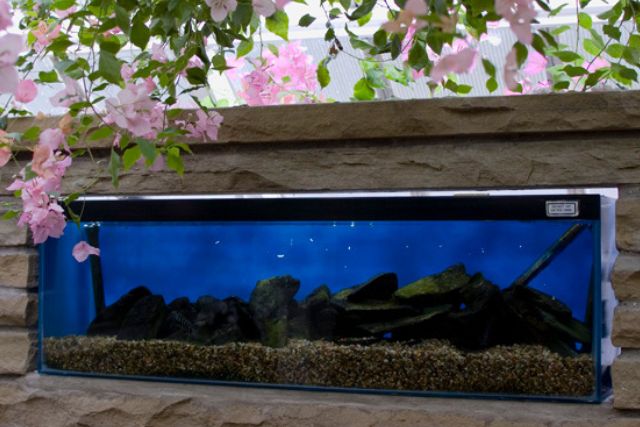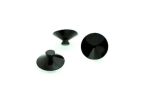Table of Contents
When it comes to building an aquarium, one of the most important considerations is the thickness of the glass. Choosing the wrong thickness can lead to disaster, with potential leaks and even shattered glass putting your aquatic pets at risk. In this article, we’ll explore the factors that determine how thick tempered glass should be for an aquarium, including the size of the tank, the type of fish you’re keeping, and the water pressure.
We’ll also provide a handy chart to help you determine the appropriate glass thickness for your aquarium, so you can ensure a safe and secure environment for your fish.
Whether you’re a seasoned aquarium owner or new to the hobby, read on to discover how to choose the right glass thickness for your aquarium.
Understanding Tempered Glass
Before we delve into the specific thickness requirements, let’s grasp the concept of tempered glass. Tempered glass is a type of safety glass that has been treated to increase its strength and durability.
The manufacturing process involves heating the glass to a high temperature and then rapidly cooling it, which creates internal stresses.
These stresses make tempered glass significantly stronger than regular glass and, in case of breakage, it shatters into small, granular pieces instead of dangerous sharp shards.
The advantages of tempered glass are clear when it comes to aquariums. Not only does it provide enhanced safety, but its increased resistance to bending and pressure ensures that the tank can withstand the weight of the water and its occupants.
However, the thickness of tempered glass remains a critical factor in determining the overall strength and integrity of the aquarium.
Aquarium Glass Thickness Requirements
The thickness of tempered glass required for an aquarium primarily depends on the size of the tank and the water it will hold.
For smaller aquariums, like nano tanks or fishbowls, with a water capacity of up to 10 gallons, a glass thickness of around 1/4 inch (6mm) to 3/8 inch (10mm) is generally sufficient. These tanks are relatively lightweight and experience minimal water pressure.
As we move up the scale to medium-sized aquariums with a water capacity of 10 to 50 gallons, the recommended glass thickness increases.
For tanks in this range, a glass thickness of 3/8 inch (10mm) to 1/2 inch (12mm) should provide the necessary strength to withstand the water pressure and maintain the tank’s integrity.
For large aquariums with a water capacity exceeding 50 gallons, the glass thickness requirements become more significant. Tanks of this size necessitate tempered glass with a thickness ranging from 1/2 inch (12mm) to 3/4 inch (19mm).
These tanks have substantial water pressure acting on the glass walls, and thicker tempered glass ensures their stability and safety.
Factors Influencing Glass Thickness
Several factors influence the required thickness of tempered glass for an aquarium. Let’s explore these factors and understand their impact on the overall strength and safety of the tank.
Aquarium Size
The size of the aquarium is perhaps the most significant factor determining the glass thickness. As the volume of water increases, so does the pressure it exerts on the tank’s walls.
Larger aquariums naturally require thicker tempered glass to withstand this increased water pressure and prevent any potential bowing or failure of the tank.
Aquarium Shape
The shape of the aquarium also plays a role in determining the necessary glass thickness. Rectangular or square tanks distribute the water pressure more evenly along their flat surfaces, making them inherently more stable.
On the other hand, bow-front or curved aquariums concentrate the pressure on specific points, demanding thicker tempered glass to handle these stress points effectively.
Water Pressure
Water pressure is directly related to the height of the water column in the aquarium. The deeper the tank, the higher the water pressure at the bottom.
This increased pressure requires thicker tempered glass to counteract the forces and prevent the tank from leaking or breaking.
Tempered Glass vs. Regular Glass: Strength and Durability
Tempered Glass
Tempered glass is a type of safety glass that undergoes a special heat treatment process, making it considerably stronger than regular glass.
The process involves heating the glass to high temperatures and then rapidly cooling it, creating a surface compression that enhances its strength. Tempered glass is about four to five times stronger than untreated glass, which is a significant advantage when used for aquariums.
Its ability to withstand impacts and pressure makes it an ideal choice, especially for larger aquariums where the water column can exert considerable force on the glass walls.
Regular Glass
On the other hand, regular glass, also known as annealed glass, is the standard glass commonly used in household windows and picture frames.
While it is suitable for many applications, using regular glass for aquariums may not be the best option, especially for larger tanks. Regular glass is more prone to cracking or shattering when subjected to sudden impacts or significant pressure.
This makes it less reliable and potentially hazardous for aquariums, as a broken tank could lead to a disastrous water leak.
In summary, when it comes to strength and durability, tempered glass clearly takes the lead over regular glass, making it a safer choice for your aquarium.
Safety Considerations: Tempered Glass and Regular Glass
Tempered Glass
One of the significant safety benefits of tempered glass is how it breaks. When tempered glass is subjected to extreme force, it does not break into sharp, jagged pieces like regular glass.
Instead, it shatters into small, relatively harmless pieces with rounded edges, reducing the risk of injury to humans and aquatic inhabitants.
This unique characteristic is why tempered glass is often referred to as safety glass, making it an excellent choice for environments like aquariums where accidents may happen.
Regular Glass
In contrast, regular glass poses a higher safety risk in case of a breakage. When it shatters, it can form sharp shards that may cause severe injuries, especially in the case of large aquariums with a significant amount of glass.
It’s essential to consider the potential consequences of using regular glass in an aquarium, as accidents can happen even with the utmost care.
When safety is a top priority, choosing tempered glass for your aquarium is undoubtedly the wiser option, providing peace of mind and a secure habitat for your aquatic pets.
Choosing the Right Glass Thickness for Your Aquarium
Consider Your Aquarium’s Needs
The thickness of the tempered glass you should choose for your aquarium depends on several factors, primarily the size and water capacity of the tank.
Larger aquariums with more water volume will require thicker glass to withstand the pressure exerted by the water. A general rule of thumb is to opt for a minimum thickness of 1/4 inch (6mm) for smaller aquariums up to 30 gallons (113 liters).
For medium-sized tanks ranging from 30 to 100 gallons (113 to 378 liters), a thickness of 3/8 inch (10mm) is recommended.
For large aquariums with capacities exceeding 100 gallons, thicker glass of at least 1/2 inch (12mm) or more should be used to ensure safety and durability.
Consult with Professionals
While the general guidelines mentioned above provide a good starting point, it’s crucial to consult with professionals or experts in the field of aquarium construction.
They can help you assess the specific requirements of your aquarium setup and recommend the appropriate glass thickness accordingly.
Additionally, they can consider any additional factors such as the type of fish you plan to keep, the water pressure at various depths, and any other unique conditions that may affect the glass’s integrity.
Consider Aesthetic Aspects
In addition to safety and functionality, you may also want to consider the aesthetic appeal of your aquarium. Thicker glass can slightly distort the view due to its greenish tint, especially on larger tanks.
If aesthetics are a primary concern, you might want to strike a balance between glass thickness and the overall visual experience.
Reinforcement and Bracing
For particularly large or custom-shaped aquariums, you may need to incorporate additional reinforcement and bracing, regardless of the glass thickness. Reinforcements, such as cross-bracing, can further enhance the structural integrity of the tank and distribute the pressure more effectively.
By carefully considering your aquarium’s needs and seeking expert advice, you can confidently choose the right thickness of tempered glass for your aquarium, ensuring a safe and enjoyable environment for your aquatic companions.
Conclusion
So there you have it, a comprehensive guide on how thick tempered glass should be for an aquarium. We hope this article helps you make an informed decision while setting up or upgrading your aquatic paradise.
Keep your finned friends happy and safe by choosing the right glass thickness, and you’ll enjoy a mesmerizing underwater world for years to come! Happy fishkeeping! 🐠🐟







